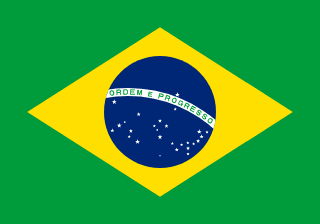Brazil - Geography

Here, let us take a look at the Geography of Brazil. note 1: largest country in South America and in the Southern Hemisphere; shares common boundaries with every South American country except Chile and Ecuador; most of the Pantanal, the world's largest tropical wetland, extends through the west central part of the country; shares Iguaçu Falls (Iguazú Falls), the world's largest waterfalls system, with Argentina
note 2: Rocas Atoll, located off the northeast coast of Brazil, is the only atoll in the South Atlantic. Mother's mean age at first birth is (), whereas, the Maternal mortality ratio is 67 deaths/100,000 live births (2023 est.)
Geographical data of Brazil
| Location | Eastern South America, bordering the Atlantic Ocean |
|---|---|
| Geographic coordinates | 10 00 S, 55 00 W |
| Map references | South America |
| Tarrain | mostly flat to rolling lowlands in north; some plains, hills, mountains, and narrow coastal belt |
| Natural Resources | alumina, bauxite, beryllium, gold, iron ore, manganese, nickel, niobium, phosphates, platinum, tantalum, tin, rare earth elements, uranium, petroleum, hydropower, timber |
| Natural Hazards | recurring droughts in northeast; floods and occasional frost in south |
| Irrigated Land | 91,833 sq km (2022) |
| Major rivers (by length in km) | Amazon river mouth (shared with Peru [s]) - 6,400 km; Río de la Plata/Paraná river source (shared with Paraguay, Argentina, and Uruguay [m]) - 4,880 km; Tocantins - 3,650 km; São Francisco - 3,180 km; Paraguay river source (shared with Argentina and Paraguay [m]) - 2,549 km; Rio Negro river mouth (shared with Colombia [s] and Venezuela) - 2,250 km; Uruguay river source (shared with Argentina and Uruguay [m]) - 1,610 km note: [s] after country name indicates river source; [m] after country name indicates river mouth |
| Major aquifers | Amazon Basin, Guarani Aquifer System, Maranhao Basin |
| Land Boundaries | 16,145 km |
| Border Countries | Argentina 1,263 km; Bolivia 3,403 km; Colombia 1,790 km; French Guiana 649 km; Guyana 1,308 km; Paraguay 1,371 km; Peru 2,659 km; Suriname 515 km; Uruguay 1,050 km; Venezuela 2,137 km |
| Coastline | 7,491 km |
| Climate | mostly tropical, but temperate in south |
| Area | |
| Total Area | |
| Land Area | 8,358,140 sq km |
| Water Area | 157,630 sq km |
| comparative Area | slightly smaller than the US |
| Maritime Claims | |
| Territorial sea | 12 nm |
| Contiguous zone | 24 nm |
| Exclusive economic zone | 200 nm |
| Continental shelf | 200 nm or to edge of the continental margin |
| Elevations | |
| Highest point | Pico da Neblina 2,994 m |
| Lowest point | Atlantic Ocean 0 m |
| Mean elevation | 320 m |
| Land Use | |
| Agricultural land | 26.7% (2022 est.) |
| Agricultural land: arable land | arable land: 6.7% (2022 est.) |
| Agricultural land: permanent crops | permanent crops: 0.9% (2022 est.) |
| Agricultural land: permanent pasture | permanent pasture: 19.1% (2022 est.) |
| Forest | 59.1% (2022 est.) |
| Other | 14.2% (2022 est.) |
Population Distribution
The vast majority of people live along or near the Atlantic coast in the east; the population core is in the southeast, anchored by the cities of São Paolo, Brasília, and Rio de Janeiro
People and Society
In Brazil, the different Ethnic groups are such that we have: Mixed 45.3%, White 43.5%, Black 10.2%, Indigenous 0.6%, Asian 0.4% (2022 est.)
| Population | |
|---|---|
| Pop growth rate | 0.61% (2024 est.) |
| Birth rate | 13.2 births/1,000 population (2024 est.) |
| Death rate | 7 deaths/1,000 population (2024 est.) |
| Health expenditure | |
| Physicians Density | |
| Hospital bed Density | 2.5 beds/1,000 population (2021 est.) |
| Total fertility rate | 1.74 children born/woman (2024 est.) |
| Gross reproduction rate | 0.85 (2024 est.) |
| Contraceptive prevalence rate | |
| Est married women (ages 15-49) | 55.9% (2023 est.) |
| Literacy | |
| Education expenditures | |
| Net Migration rate | -0.2 migrant(s)/1,000 population (2024 est.) |
| Nationality | Brazilian | Brazilian(s) |
| Languages | |
| Religions | Roman Catholic 56.8%, Evangelical 26.9%, none 9.3%, other 4%, Spirtism (Espírita) 1.8%, unspecified 1.4%, Umbanda and Candomblé 1.1%, Indigenous religions .06%, undeclared 0.2% (2022) |
| Age Structure | |
| 0-14 years | 19.6% (male 22,025,593/female 21,088,398) |
| 15-64 years | 69.5% (male 75,889,089/female 77,118,722) |
| 65 years and over | 10.9% (2024 est.) (male 10,251,809/female 13,677,901) |
| Dependency Ratios | |
| Total dependency ratio | 43.8 (2024 est.) |
| Youth dependency ratio | 28.2 (2024 est.) |
| Elderly dependency ratio | 15.6 (2024 est.) |
| Potential support ratio | 6.4 (2024 est.) |
| Median Age | |
| Total | 35.1 years (2024 est.) |
| Male | 34 years |
| Female | 36.1 years |
| Urbanization | |
| Urban population | 87.8% of total population (2023) |
| Rate of urbanization | 0.87% annual rate of change (2020-25 est.) |
| Major urban areas (Pop) | 22.620 million São Paulo, 13.728 million Rio de Janeiro, 6.248 million Belo Horizonte, 4.873 million BRASÍLIA (capital), 4.264 million Recife, 4.212 million Porto Alegre (2023). |
| Sex Ratio | |
| At birth | 1.05 male(s)/female |
| 0-14 years | 1.04 male(s)/female |
| 15-64 years | 0.98 male(s)/female |
| 65 years and over | 0.75 male(s)/female |
| Total population | 0.97 male(s)/female (2024 est.) |
| Infant Motality | |
| Total | 12.9 deaths/1,000 live births (2024 est.) |
| Male | 14.6 deaths/1,000 live births |
| Female | 11.1 deaths/1,000 live births |
| Life Expectancy at birth | |
| Total population | 76.3 years (2024 est.) |
| Male | 72.6 years |
| Female | 80.1 years |
| Drinking Water Sources | |
| Improved: urban | urban: 99.8% of population (2022 est.) |
| Improved: rural | rural: 98% of population (2022 est.) |
| Improved: total | total: 99.6% of population (2022 est.) |
| Unimproved: urban | urban: 0.2% of population (2022 est.) |
| Unimproved: rural | rural: 2% of population (2022 est.) |
| Unimproved: total | total: 0.4% of population (2022 est.) |
| Sanitation facility acess | |
| Improved: urban | urban: 94.7% of population (2022 est.) |
| Improved: rural | rural: 65% of population (2022 est.) |
| Improved: total | total: 91% of population (2022 est.) |
| Unimproved: urban | urban: 5.3% of population (2022 est.) |
| Unimproved: rural | rural: 35% of population (2022 est.) |
| Unimproved: total | total: 9% of population (2022 est.) |
| Alcohol consumption per capita | |
| Total | 6.12 liters of pure alcohol (2019 est.) |
| Beer | 3.84 liters of pure alcohol (2019 est.) |
| Wine | 0.24 liters of pure alcohol (2019 est.) |
| Spirits | 2 liters of pure alcohol (2019 est.) |
| Other alcohols | 0.04 liters of pure alcohol (2019 est.) |
| Tobacco use | |
| Total | 11.2% (2025 est.) |
| Male | 14.4% (2025 est.) |
| Female | 8.3% (2025 est.) |
Demographic profile
All Important Facts about Brazil
Want to know more about Brazil? Check all different factbooks for Brazil below.









